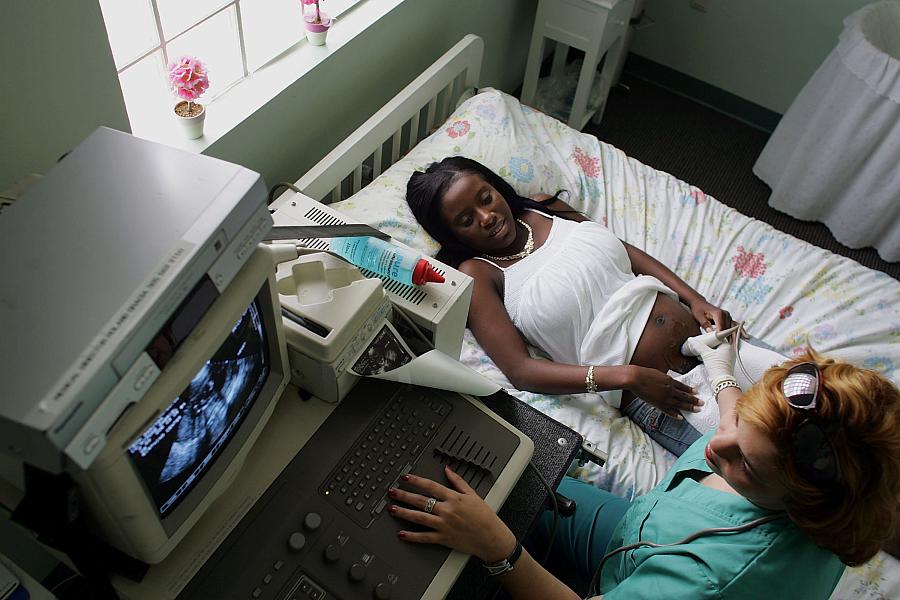In rural America, maternity care is vanishing. A reporter tells the story of the Black mothers left stranded in Florida.

Much has been written about the alarmingly high rate of maternal mortality in the United States, particularly among women of color. Yet surprisingly little of that coverage has focused on where the problem is most acute: rural communities.
Nada Hassanein set out to tell that story for USA Today from the perspective of mothers in the northern Florida town of Jasper, more than 35 miles from the nearest maternity hospital. Many women have to go even farther — 65 miles — for the specialized care that their pregnancies require. Having to travel so far puts the town’s mostly Black residents at greater risk of pregnancy complications or worse.
“I wanted to show what it’s like living in an area without prenatal care and without labor and delivery units,” Hassanein said. A 2019 Center for Health Journalism National Fellow, she received a grant from the Center’s 2022 Impact Fund for Reporting on Health Equity and Health Systems that paid for trips to Jasper and other expenses during her six-month project.
As rural hospitals and obstetric wards have shut down, maternity care “deserts” have spread across rural America over the past decade. Hassanein’s four-part series looked at how systemic racism and a history of disinvestment in rural areas have contributed to these deserts — with sometimes deadly consequences, particularly for women of color. The maternal death rate among Black women living in rural communities is three times higher than it is for White women.
“Women of color already face higher maternal health risks,” Hassanein said. “I wanted to illustrate how these risks intersect and exacerbate each other to affect the health and wellbeing of women and their babies.”
Her reporting found that nationally about 2 million women of childbearing age live in rural communities at least 25 miles away from a hospital with a labor or delivery unit. Rural Black communities are farther away from obstetric care, on average, and are more likely than rural White communities to lose the care centers they have.
Hassanein said she “really appreciated the health equity and health systems focus of the grant” from the Center’s Impact Fund. “Those are topics I’m always trying to shed light on — where are the gaps and who is being marginalized,” she said. Without the Center’s support, she might not have been able to pursue the project at all, she said.
At the time she was reporting, Hassanein’s then employer, USA Today, was laying off staff and had little money for travel and project reporting. Covering daily news was the priority. Without the grant, she would never have been able to take multiple trips Jasper and interview dozens of women and their families, community advocates and leaders, she said.
“It was really essential to producing a project that would authentically reflect their experiences and tell the story of this landscape of inequity,” Hassanein said. “I wouldn’t have been able to do it if it weren’t for the grant support. I’m really grateful to the Center for supporting this project amid a really difficult time for journalism.”
The federal government has only recently begun to address the problem of maternity care deserts by developing a system for ranking rural communities with the worst access to maternity care and prioritizing them for funding to improve it. Months after her stories were published, the federal government released its long-awaited scores ranking areas of the country experiencing a shortage of maternity care professionals. The scores are a key step in getting the funding to communities with the greatest need for better access to care.
Whether her series helped to speed up the process is hard to say. But Hassanein heard from many health care experts who were grateful that her project focused attention on the problem at the national level. For Hassanein, now a health inequities reporter for Stateline, a nonprofit news service covering state policy trends, the knowledge she gained and contacts she made continue to inform her reporting.
Perhaps the most gratifying impact of her series was its effect on a community in northern Florida that assumed it had been forgotten. “I don’t think they ever expected to have their story told,” Hassanein said. “In many ways the most important impact was for the first time they felt heard.”
